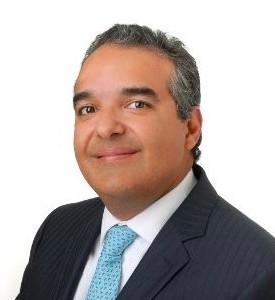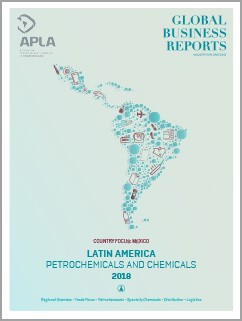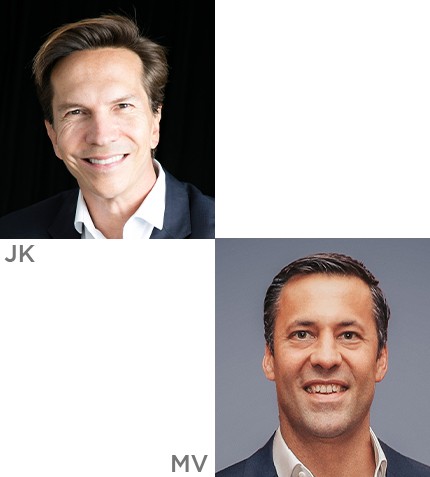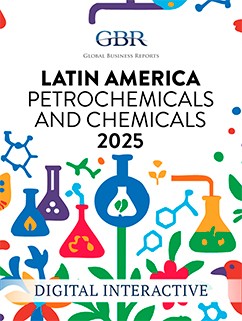
"Mexico is the biggest opportunity in Latin America. From here you can import chemicals from everywhere as Mexico has free trade agreements with many countries. There are very few import taxes on chemicals, which is definitely not the case with other countries. Regarding NAFTA, if we have to start paying taxes on imports from the United States, we will just look for more Chinese, Indian or European products where there is no duty."
RELATED PUBLICATION
ARTICLES FROM THIS PUBLICATION
Johnny Silva
MANAGING DIRECTOR, DISAN MEXICO
What have been the key milestones for Disan in the last few years?
We have doubled our size over the last four years to US$26 million and are targeting $32 million in 2018. Disan focuses on personal care, which is our ‘bread and butter’, household care, pharmaceuticals and the industrials market where we sell semi-commodities like glycerin, propylene glycol and mineral oil. We have also started serving the oil and gas industry by selling specialty chemicals to stimulate production of wells where Pemex has stopped producing. We analyze a well and then advise service companies on the exact chemistry needed to re-start production. We also just started serving the animal feed market. Mexico has the fifth largest animal feed market globally, is the biggest producer of chickens and eggs and the second largest provider of pork.
We have been successful because we are smaller and customer focused. We want to be perceived by our clients as flexible and adaptive. As the other distributors get bigger they get more rigid, so this is where we have an advantage.
Are there many SMEs in the industries Disan serves such as personal care or is the market becoming more consolidated?
There are a lot of SMEs; we have over 350 customers that produce products like creams and shampoos, for example, which are not in Walmarts but are in local stores. For instance, the company Kuala found that there was a gap between the performance of their products and the very low cost brands that had low quality products and performance. They have now found the perfect balance: good performance and very affordable price, and within 36 months they went from zero to 12% market share.
What are Disan’s packaging capabilities and what is its presence across Mexico?
Disan has invested in a US$200,000 white room so it can package from a five kilo pale, to a drum to a tote. We can do this for products such as sorbitol, glycerin and mineral oil, so it gives us that flexibility in our service to customers. We cover efficiently a 200km radius around Mexico City, as well as Guadalajara, which means we cover around 90% of the market.
What is the average margin for specialty chemicals in Mexico?
It depends on how specialty chemicals are defined. Generally, specialties are sold, commodities are bought. A ballpark figure for specialties is within 12% to 15% margins. Therefore, Disan does not sell solvents which would make us pennies and are too easy to steal and resell. We have a strong relationship with Dow Corning and when you sell products like theirs, there are not that many competitors.
The number of cargo thefts grew by 127% in 2017, with chemicals being the second most stolen product category. How big an issue is this for distributors like Disan?
Disan has not had an issue in the last four years. The reason is because our products are very hard to re-sell. A thief would need to really know chemistry in order to steal from a truck with 20 different silicone products, for example. The thieves do not get involved in these kinds of specialty products because they do not have the knowledge or the proper certificates to sell it.
Do you agree that the chemical distribution market in Mexico is performing well and what is the level of opportunity compared to other Latin American countries?
In certain commodities the big players are aiming for more volume but are unwilling to make smaller margins, whilst smaller companies cannot survive on single digit margins. Over the last decade chemical prices went down and it was a buyer’s market. However, over the last nine months, the whole chemical market changed and now it is the other way around. Now strategic buyers want to talk with us about availability and security of supply. After the 2008 financial crash, with prices low, suppliers invested less in capacity but the economy grew annually by 1% to 3%. Now there is more demand than supply.
What is the level of opportunity in Mexico compared to other Latin American countries?
Mexico is the biggest opportunity in Latin America. From here you can import chemicals from everywhere as Mexico has free trade agreements with many countries. There are very few import taxes on chemicals, which is definitely not the case with other countries. Regarding NAFTA, if we have to start paying taxes on imports from the United States, we will just look for more Chinese, Indian or European products where there is no duty.
Disan has a very strong presence in Columbia where it sells over US$80 million a year, as well as a presence in Ecuador, Peru and Venezuela, and has just bought 50% of a company in Argentina which is a big market. We are also looking at the south of the United States. Furthermore, we are considering acquisitions in Mexico; there are many US$3 to US$8 million companies that may be a good opportunity.











